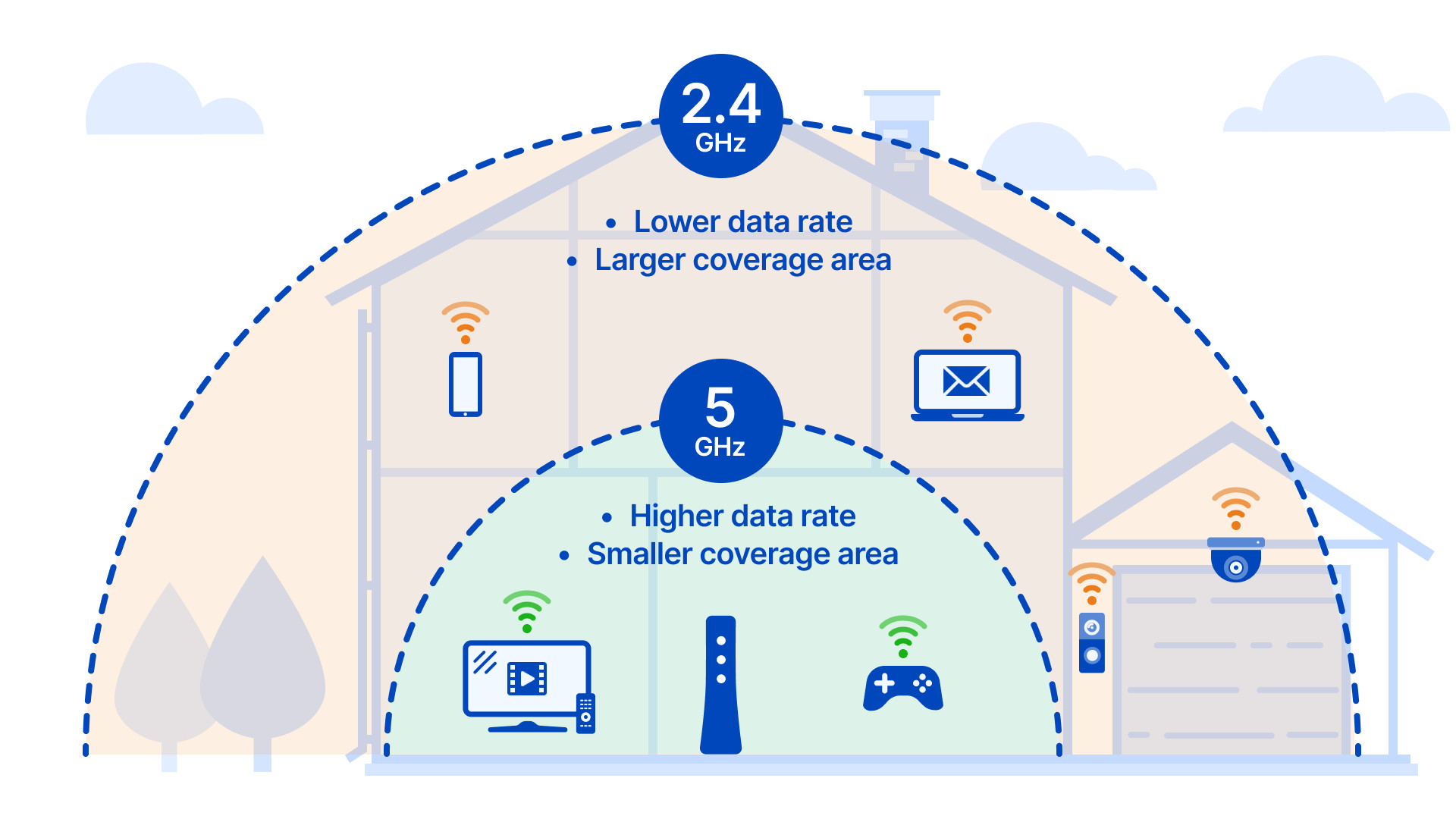Why my Wi-Fi internet connection is so unstable? Especially with new provider?
Usually it is not really an internet provider’s fault.
My internet connection was slow, but steady. Since switching to a new provider internet drops at least a few times a day and you are saying is not provider’s fault?
To provide higher speed, all ISPs must use new Wi-Fi access points (usually routers have built in Wi-Fi APs) with dual band capability. Old Wi-Fi 2.4 GHz maximum speed for mobiles, provided by ISPs routers 140 Mbps (if 20MHz). 5GHz max speed 700 Mbps (if 80MHz). But higher frequency bands overcome obstacles much worse. Because of that, devices have to keep switching between bands. Close to AP 5Ghz for better speed further 2.4GHz to avoid losing signal. In the process of switching bands, the device might lose connection for a few seconds, but the application might stop working at all. Can’t we just increase the power level for 5 GHz to better overcome obstacles? There are health and safety regulations limiting power levels. For 5 GHz already allowed a higher power level indeed, twice higher. That begs the question – is 5 GHz frequency less harmful? There is no one scientific study which proofs that. Industry funded studies just cannot find the evidence of the harm, which is no proof of safety. The FCC (USA Federal Communications Commission) lost the case, failed to provide RF radiation safety evidence. Click here to read PRESS CONFERENCE: EHT ET AL. V. FCC | LANDMARK CASE ON WIRELESS 5G SAFETY.
In contrast, there are many of peer-reviewed studies raising concerns about microwave radiation safety. Click here to find over 80 of wi-fi papers in one place.
Devices sometimes misbehaving when close to AP signal is too strong, especially if there are metal appliances nearby. Then, reflected from appliances, signal can create very high RF noise, and impact communication performance so badly that speed drops 10 times, or the device gets disconnected completely.
High signal power level also create more problems – interference between nearby access points. For W-Fi 6 also intercarrier interference (ICI) and compression because of its OFDMA.
How to reduce potential health impact?
Old good CAT 5E cables can perform at 2.5Gbps, CAT 6 at 5Gbps, CAT 6A at 10Gbps, all up to 100 meters long. All those speeds are full duplex, it means devices can send and receive data at that speed at the same time. Since Wi-Fi does not support it, we can double the wired specifications for a fair comparison. With all modern network switches, each device has its own dedicated port with its own collision domain. Wi-Fi all devices use the same medium – air. This means that hard-wired devices never interrupt each other and do not have to drop connection each time collision happens on Wi-Fi. Hard-wired connectivity does not emit microwave radiation at all. Connections are perfectly stable, if creating switching loops avoided and cables not damaged. To not look messy and avoid tripping, cables should be installed inside walls, trunkings and under floor skirts. All non-mobile devices like TVs, desktop and laptop computers, play stations should be hard-wired. If many devices need to be connected, there are network switches. You can install those network switches near the router or somewhere else wherever it is more convenient to install multiple cables.
Do not feel like installing cables yourself? We can help you.
